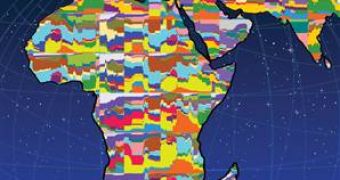This study is the most impressive research so far tracking our evolutionary journey. The new research published in the Nature journal confirms that modern humans emerged in Africa and then spread into Asia to reach Europe, the Pacific and Americas. The team focused on 650,000 genetic markers in about 1,000 subjects from 51 populations worldwide, the largest study of this type so far.
"You get less and less variation the further you go from Africa," said co-author Marcus Feldman, an evolutionary biologist at Stanford University in California.
This confirms the idea that Homo sapiens left Africa about 100,000 years ago. Each small group of individuals founded a new population in each new colonized region, using a smaller sample of the originally African gene pool, in a phenomenon called genetic bottleneck. Diversity clearly decreased during the migrations.
"If you keep sampling like that, then mathematically you must lose variation," said Feldman.
Other researchers looked at a maximum of 1,000 genetic markers, comparing just 3-4 populations.
"It's sort of like looking at Mars with the naked eye versus with a big, very powerful telescope," said co-author Richard Myers, a geneticist from Stanford University.
The detailed analysis revealed a shared portion of genes between the Yakut, indigenous of northeastern Siberia, and Native Americans, matching the archaeological findings of migration across the Bering area. The research also showed a clear racial distinction between the northern and southern Chinese populations and between different European populations.
"But perhaps even more striking is how similar humans are to each other. Some 90 % of the genetic variation occurs within populations, not among them. That turns out to be very profound, because it's not like we've got these 51 populations that are different species. We're really, really close to each other," said Myers.
The team found that racial types were characterized by thousands of genetic markers.
"Those genes which we classically use like skin color and eye color and hair structure to differentiate what we commonly call races is a tiny fraction of all the variation there is," said Feldman.
"In particular, the pattern of variation shows that the route of migration out of Africa was into the Middle East and then to the rest of Eurasia, the Americas, and Oceania. That tends to agree with what we're seeing on the Y-chromosome side," said Spencer Wells, a population geneticist and director of the Genographic Project, which is charting the migratory history of humans around the globe.
The study strengthened the idea of Africans spreading into the Middle East, followed by Europe and Asia, the Pacific Islands and, finally, the Americas.
"Populations in the Middle East have a unique signature of African, European, and Asian characteristics. It looks like a gateway. You see a lot more mixture there ... that's one of the types of findings you get by looking at this level of detail," said Myers.
The research also showed that sometimes a person's roots can be traced to a small group specific to a geographic area.

 14 DAY TRIAL //
14 DAY TRIAL //